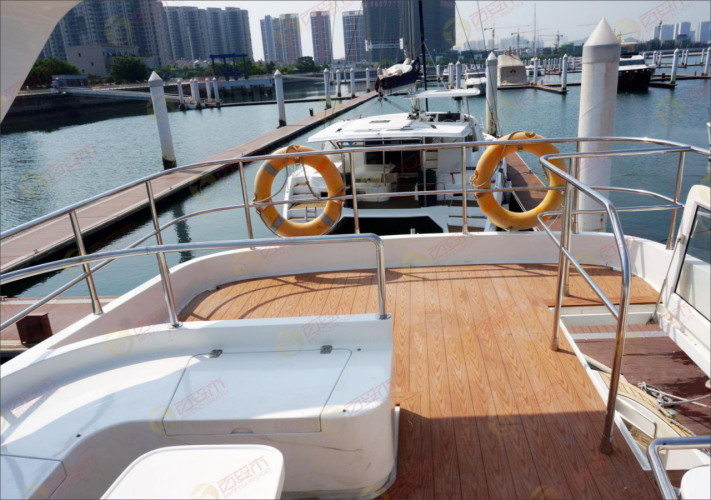With the exhaustion of global forest resources and the increasing awareness of national environmental protection, the WPC(Wood plastic composite) industry has been developed well , Meanwhile, ASA-PVC co-extruded WPC(Wood plastic composite) has also been widely used in the fields of garden, transportation, architecture, home decoration, vehicle and ship interior decoration etc.

ASA-PVC Co-extrusion WPC(Wood plastic composite) is extruded from PVC and ASA co-extrusion coating materials by two extruders respectively, and then the ASA coating layer is attached to the substrate surface through the co-extrusion compound die head, so as to achieve the purpose of coating the substrate.Due to the different raw materials used in the cladding layer, the co-extrusion cladding performance is also different. Currently, the co-extrusion cladding materials mainly include PMMA, PVC and ASA.
1. Processing of raw materials:
PVC WPC(Wood plastic composite) is made of PVC resin, wood powder, stabilizer, lubricant, filler, modifier and other mixed, and the general PVC mixing process is the same.ASA material drying processing before processing, The ASA material shall be dried before processing to prevent pitting and other defects on the surface, the drying conditions for: 85 ℃ to 95 ℃, 3-6 hours.
Process conditions
(1) The Co-extrusion machine
(2) The main extruder
Processing of raw materials: ASA materials must be dried. The first drying time should be longer a little ,no less than 4 hours.Drying temperature selection according to the specific situation, the temperature is high, the time can be shorter;The temperature is low and the time can be extended appropriately, but the maximum time should not exceed 24 hours.
2. Treatment of surface scratches:
After product demolding, the ASA surface has no scratches and is very smooth and even. And after cooling and finalizing the design, the surface will appear powdery material;After cooling completely, the surface will appear obvious scratches. In this regard, it is necessary to ensure that the mold is smooth, no right-angle transition joints, less scratches;The shorter the stock mould, the less scratches on the surface, the products produced by the 2-section stock mould are less scratches than those produced by the 4-section stock mould.The last three sections after the 4-section stock mould were properly treated, and the products produced had almost no scratches and the surface condition was greatly improved.
3. Control of co-extrusion layer thickness:
The thickness of ASA co-extrusion layer is related to the weatherability, covering rate and processing performance of ASA cladding layer.ASA has ultrastrong weatherability and good solubility with PVC, and the combination of the two is very strong.Therefore, the thickness of ASA co-extrusion layer generally reaches 0.2-0.3mm to meet the quality requirements.Thickness is too thin, some of the lighter color will appear in the phenomenon of white;The thickness is too thick, the production of profiles sometimes will appear bending phenomenon, so the control of the thickness of the co-extrusion layer is very important to ensure the quality of products.



